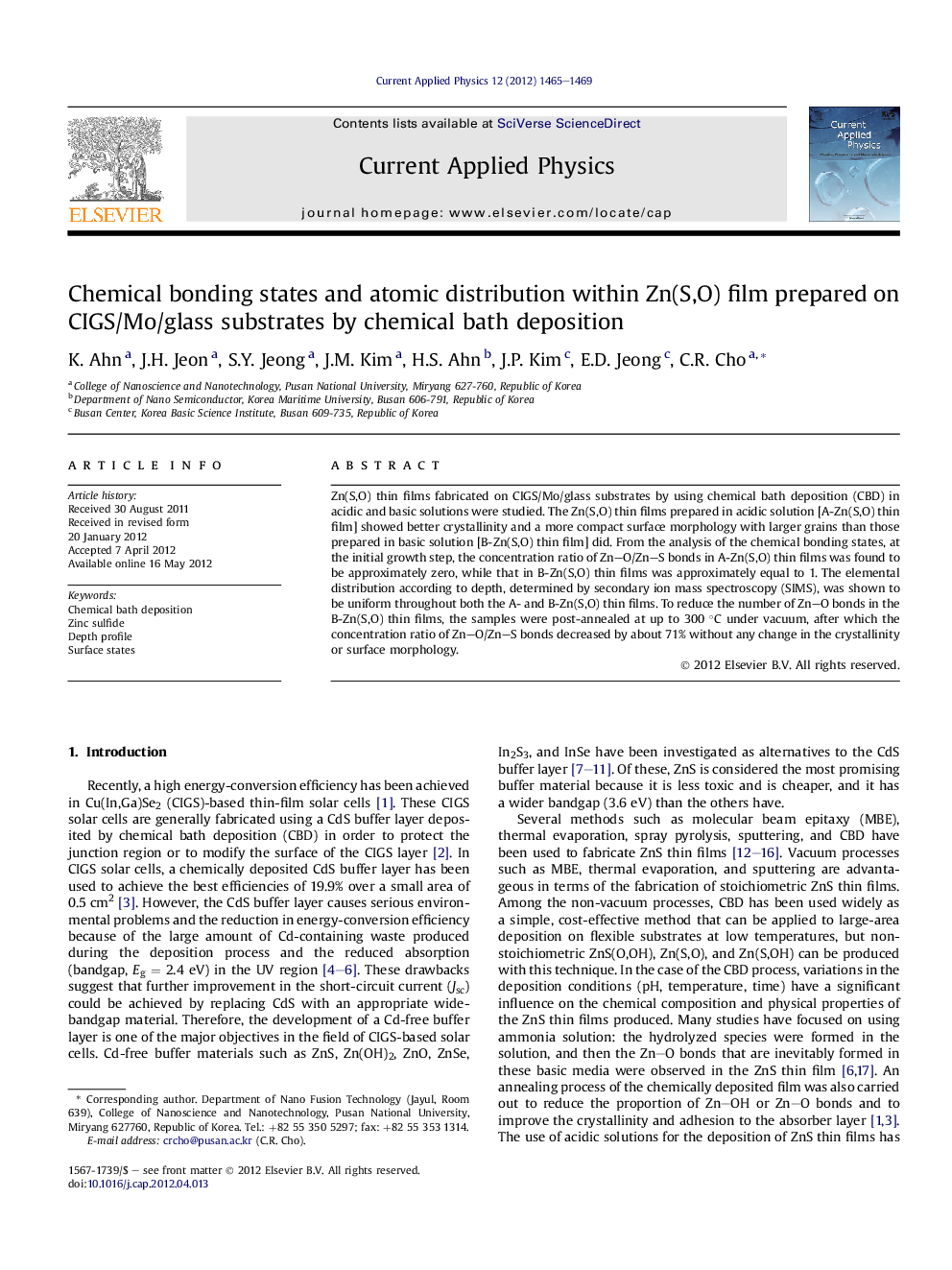| Article ID | Journal | Published Year | Pages | File Type |
|---|---|---|---|---|
| 1787886 | Current Applied Physics | 2012 | 5 Pages |
Zn(S,O) thin films fabricated on CIGS/Mo/glass substrates by using chemical bath deposition (CBD) in acidic and basic solutions were studied. The Zn(S,O) thin films prepared in acidic solution [A-Zn(S,O) thin film] showed better crystallinity and a more compact surface morphology with larger grains than those prepared in basic solution [B-Zn(S,O) thin film] did. From the analysis of the chemical bonding states, at the initial growth step, the concentration ratio of Zn–O/Zn–S bonds in A-Zn(S,O) thin films was found to be approximately zero, while that in B-Zn(S,O) thin films was approximately equal to 1. The elemental distribution according to depth, determined by secondary ion mass spectroscopy (SIMS), was shown to be uniform throughout both the A- and B-Zn(S,O) thin films. To reduce the number of Zn–O bonds in the B-Zn(S,O) thin films, the samples were post-annealed at up to 300 °C under vacuum, after which the concentration ratio of Zn–O/Zn–S bonds decreased by about 71% without any change in the crystallinity or surface morphology.
► Zn(S,O) thin films were prepared by using chemical bath deposition in acidic and basic solutions. ► The chemical bonding states and atomic distribution were comparatively studied. ► Zn(S,O) thin films prepared in acid solution (A-Zn(S,O)) show better crystallinity and surface morphology. ► A-Zn(S,O) thin film is closer to the ideal ZnS stoichiometry. ► Post annealing process is needed to make the Zn-S bond dominant in Zn(S,O) thin films prepared in basic solution.
